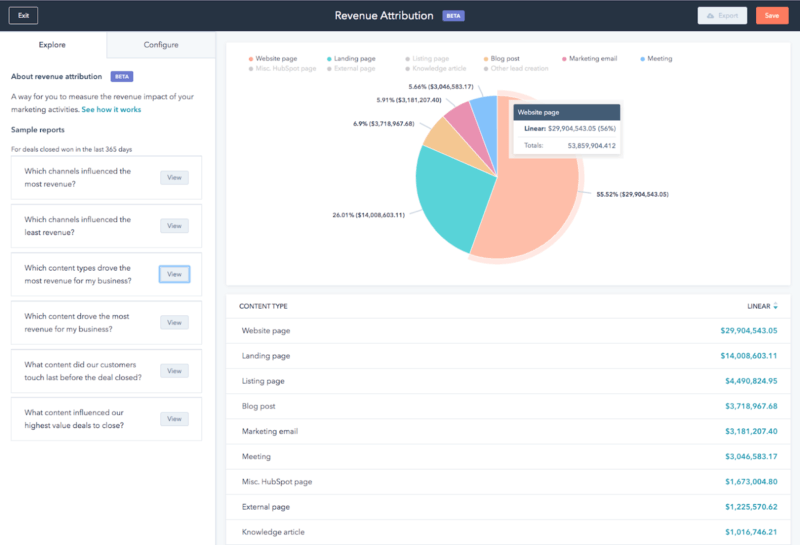Marketers face countless complexities and nuances when it comes to tasks such as attribution reporting, A/B testing and account-based marketing. Whether cobbling together data from different platforms to create a report or spending hours analyzing performance, these challenges can add up to frustrating experiences and under-utilized martech systems.
Marketing platform provider HubSpot has added several key features to its Marketing Hub Enterprise offering in hopes of providing a more user-friendly experience for enterprise users. The new features include revenue attribution reporting, intelligent A/B testing, partitioning and account-based marketing tools, among others.
Why we care
Revenue attribution has plagued marketers for years, especially as new digital channels have come into play. HubSpot’s interface and design are configured to help marketers identify what touchpoints and channels drive the most value from their efforts.

A/B testing requires a heavy lift on the end-user and could pose risks. It can be a tedious process that ultimately relies on the marketer to determine the outcome and wastes opportunities for conversions from customers who view the losing variation during the test.
“Adaptive testing solves both problems,” said HubSpot CMO Kipp Bodnar. “It uses reinforcement learning, a type of machine learning, to continuously optimize the traffic distribution of a test based on conversion rate. And, in the end, it picks a winner for you. No need to manually check-in. No need for a statistical significance calculator. As an added bonus, because it shows the best-performing variation to the user more often over time, it improves the customer experience, too.”
More on the news
- “There are no data requirements to use Adaptive Page Testing,” said Bodnar. “Pages with higher website traffic will have better results, as you might expect with a data-driven ML model.”
- ABM and asset partitioning features are currently in beta.
- HubSpot also increased limits on workflows, lists and more to expand capacity for its users.

